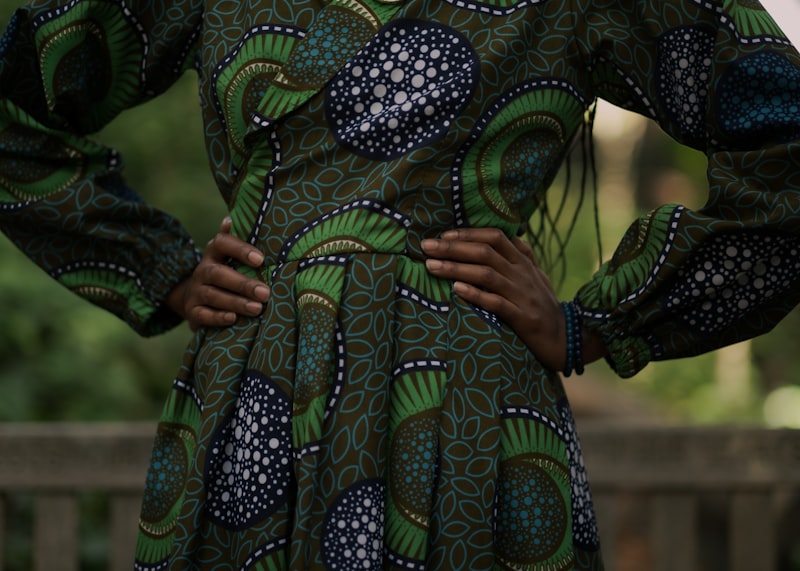Understanding Dress Construction for Better Alterations
Understanding Dress Construction for Better Alterations
When it comes to fashion, the art of dressmaking transcends mere aesthetics; it's about understanding how garments are constructed. For individuals looking to improve their tailoring skills or seeking better alterations, a solid grasp of dress construction is essential. This guide aims to shine a light on the intricate world of dress construction and provide practical insights for achieving those flawless fittings.
What is Dress Construction?
Dress construction refers to the process of designing and sewing together the various components of a dress to create a cohesive and functional garment. This involves understanding the use of patterns, fabrics, and techniques that contribute to the overall fit and style of the dress. The more you understand these elements, the better equipped you will be for making alterations. Here are some key components:
| Component | Description | Importance in Alterations |
| Patterns | Blueprints of the dress design that dictate shape and fit. | Knowing how to modify patterns is crucial for adjustments. |
| Fabrics | The material used for the dress, affecting drape and comfort. | Understanding fabric properties helps in selecting appropriate alterations. |
| Seams | The lines where two pieces of fabric are sewn together. | Altering seams can significantly change the fit. |
| Hems | The bottom edge of the dress that is often folded and stitched. | Hemming techniques dictate the final look of the garment. |
Key Concepts in Dress Construction
To delve deeper into dress construction, let's explore some fundamental concepts that can help in making better alterations:
1. Understanding Dress Patterns
Patterns are the backbone of any garment. They dictate the shape and fit of the dress, and a thorough understanding of pattern modifications can lead to more successful alterations. Common alterations include:
- Length Adjustments: This can involve shortening or lengthening the dress, often requiring adjustments to the hem and bodice to maintain proportion.
- Waist Adjustment: Altering the waistline can help in achieving a better fit, especially for a more tailored silhouette.
- Size Alterations: Increasing or decreasing the overall size often involves intricate adjustments to multiple sections of the dress.
2. The Importance of Fabric Knowledge
Different fabrics behave differently, and this knowledge is crucial for alterations. For instance, stretchy fabrics require different techniques compared to woven fabrics. Consider the following aspects:
- Fitting Ease: Understanding the ease required in different fabrics can inform how much space to leave when making alterations.
- Fabric Shrinkage: Pre-shrinking fabric can minimize post-alteration surprises. Choosing the right fabric for the season is also vital.
- Maintenance: Some fabrics require special care; knowing this can help maintain the garment post-alteration.

3. Seam Types and Their Impact
The type of seams used in a garment will greatly influence the alteration process. Different seams can allow for varying degrees of adjustments:
- Basic Seams: Straight seams are easier to alter since fabric can be easily pulled in or let out.
- Flat-Felled Seams: More complex and durable but challenging to alter, requiring professional techniques.
- French Seams: While neat, they can limit alteration options due to their intricate finish.
Common Alterations for Dresses
Now that we've established a foundational understanding of dress construction, let's look into common alterations that individuals often seek out:
1. Hemming
A popular alteration, hemming adjusts the length of the dress. It's essential to consider the type of hem finish that matches the dress's design. A simple straight hem is the most common, but you may want to explore other finishes for specific styles.
2. Sizing
Whether adjusting for weight changes or purchasing the wrong size, resizing a dress can be complex. Here’s what to keep in mind:
- Size reduction may involve taking in seams at the sides or the center back.
- Size enlargement typically requires additional fabric, which may not always be available unless the dress was originally cut with extra fabric allowances.
3. Restructuring the Bodice
For dresses that do not fit well around the bust or shoulders, altering the bodice can make a significant difference. Consider adjusting:
- The bust line for a better fit and support.
- The shoulder straps, which can affect the dress's overall silhouette.
Tips for Successful Dress Alterations
Having explored the various components and common alterations, here are some practical tips to ensure your alterations turn out successful:
- Always Pin First: Before making any cuts, pin the areas that need adjustments. This provides a visual guide as you work.
- Measure Twice, Cut Once: Consistent measuring is crucial to avoid unwanted mistakes during alterations.
- Test on Scrap Fabric: If you're trying out a new technique, practice on similar fabric before altering the actual garment.
- Use Quality Tools: Invest in good scissors, pins, and sewing machines to reap better results.
Conclusion
Understanding dress construction is essential for anyone interested in better alterations. The insights shared in this article empower you to make smarter decisions when it comes to altering dresses, ensuring a better fit and more flattering look. Always keep in mind that practice makes perfect, and don’t hesitate to consult professional tailors for complex adjustments. By honing your skills in dress construction, you can elevate your fashion experience, whether you're altering a vintage find or fitting a brand-new piece. Armed with this knowledge, you’re now on your way to achieving dress alterations that look immaculate.
